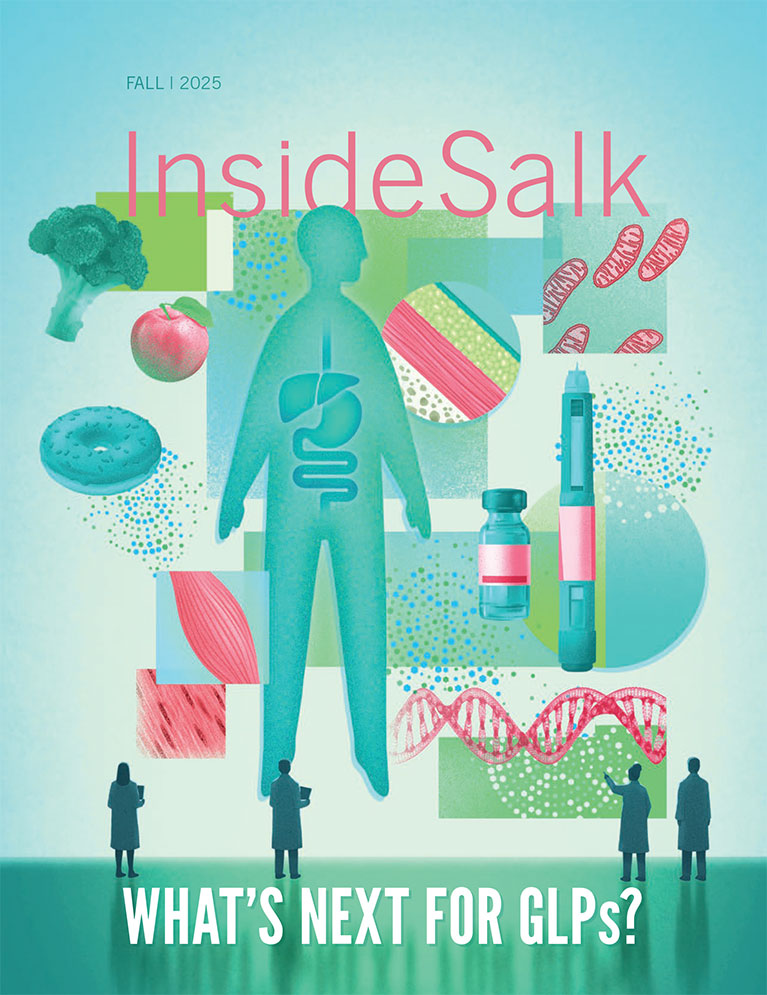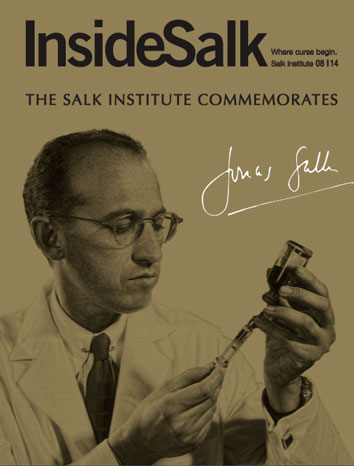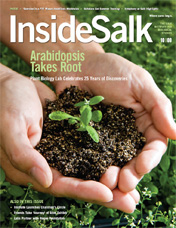INSIGHTS Travis Berggren Working at the intersection of biology and technology
Diving into biological research—systems, cells, proteins and DNA—requires the technology to see the unknown and chart the complex and often evasive inner workings of systems. Emerging technologies allow scientists to reveal the microscopic, construct new research models and analyze an immense amount of information.
Travis Berggren bridges this intersection of biology and its ever-evolving need for technology by overseeing shared resources, most notably Salk’s “cores.”
These shared hubs housing cutting-edge equipment and trained experts facilitate world-changing discoveries in genetics, neuroscience, cancer, immunology, plant biology and other areas.
Day-to-Day
In his current role as the executive director of research operations, Berggren provides institutional oversight for all shared scientific resources at the Institute, including animal research, more than a dozen scientific cores and other scientific resources. These efforts enable Salk labs to draw upon state-of-the-art technology and expertise. He also develops interinstitutional partnering agreements for access to additional scientific resources, helping to facilitate scientific discoveries at Salk and beyond.
Path to Salk
A San Diego native, Berggren was a curious child who always wanted to understand how things worked. In school, he gravitated toward organic chemistry and earned his undergraduate degree from the University of California San Diego. From there, Berggren worked in the lab of Salk’s Wylie Vale in 1993-95 to bridge biology and chemistry, focusing on honing chemistry techniques for analyzing DNA. That is also where he met his future wife (Jennifer Black, MD). Together they moved to the University of Wisconsin-Madison for his PhD, where early work on the human genome project and emerging biomolecular analytical techniques led Berggren into the field of human embryonic stem-cell research.
He studied alongside pioneers in the field of stem-cell biology before returning to Salk in 2007 to establish the Institute’s first open-access stem-cell core-research facility. In subsequent years, Berggren helped to launch or renovate core resources in the areas of biophotonics, next-gen sequencing and bioinformatics. “I’ve been so lucky to work with an amazing group of bright and motivated researchers here at Salk,” says Berggren.
Leisure Time
Berggren has been an avid recreational cyclist since the age of 13 and has recently become passionate about commuting on an electric bike, which puts his 32-mile round trip in the same time frame as driving. He also bikes for Salk’s Pedal the Cause, a local effort to raise funds supporting cancer research. And, like many native San Diegans, Berggren loves being outdoors. At the beach, he favors a surf kayak, a device that is exactly what it sounds like: a kayak made to surf the waves. In addition, he often spends weekends camping with his three daughters, aged 16, 13 and 7.
Inspiration
“Currently, the field of stem-cell research is creating exciting new ways to study human diseases, to promote regeneration and improve the outcomes of aging,” Berggren says. “Another fascinating line of study is how to better understand neurodegeneration, dementia and Alzheimer’s using cutting-edge tools. Stem-cell technology in particular allows us to, for the first time, study some of the early developmental processes for these diseases within cell-based model systems. For example, the stem-cell core has been helping researchers make relatively new tools called organoids. Most cell cultures are done in a two-dimensional cell-culture dish, but we know that human biology happens in three dimensions. Being able to create these three-dimensional organoids that can represent certain types of brain, kidney or heart tissue is starting to open up extensions of how this human stem-cell technology can replicate human biology.” (See this issue’s “Analysis” to learn more about organoid technology.)
Fun Fact
Growing up in San Diego has its perks: Before he left for graduate school, Berggren put his name on a years-long wait list for a boat permit in a popular area of town. Eleven years later, through a call on his parents’ landline, he was granted a permit to use the much-coveted beach bar at Mission Bay for his 16-foot Hobie Cat.
Long View
“The fields of genomics and genome sequencing have quickly advanced and become powerful and complicated,” Berggren says. “That has blown me away in a lot of ways. There were a lot of people that thought once we were able to sequence the first human genome, suddenly we would have so many answers. But what sequencing did is create a framework and scaffolding to allow us to dig into the fine inner workings of how genes, genomes and gene expression are controlled and how they influence how biology functions. You combine that technology with the revolutions we’ve seen in gene editing and microscopy—as well as ancillary technologies like mass spectrometry and metabolomics that have really come into their own in the last decade—and it’s a very, very exciting time to be doing biological research.”
Support a legacy where cures begin.
Featured Stories
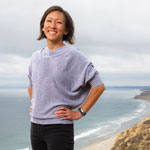 Kay Tye – Breaking down the brainKay Tye, the newest addition to Salk’s faculty, is a burst of energy who can chat about everything from the mysteries of the brain to the intricacies of a breakdance move. In this Q&A, she discusses her roundabout journey to science, her passion for mentorship and her love of life outside the lab.
Kay Tye – Breaking down the brainKay Tye, the newest addition to Salk’s faculty, is a burst of energy who can chat about everything from the mysteries of the brain to the intricacies of a breakdance move. In this Q&A, she discusses her roundabout journey to science, her passion for mentorship and her love of life outside the lab. How to stop a killerPancreatic cancer is one of the most difficult cancers to detect and treat, in part because of an impenetrable "shield" that forms around the tumor. Salk scientists, many of whom have a personal connection to cancer, are leading the charge in new approaches to tackle this deadly disease.
How to stop a killerPancreatic cancer is one of the most difficult cancers to detect and treat, in part because of an impenetrable "shield" that forms around the tumor. Salk scientists, many of whom have a personal connection to cancer, are leading the charge in new approaches to tackle this deadly disease.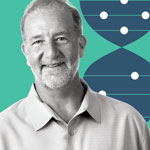 Travis Berggren – Working at the intersection of biology and technologySenior Staff Scientist Travis Berggren shares his path to Salk and his perspective on how advances in technology facilitate world-changing discoveries in genetics, neuroscience, cancer, immunology, plant biology and other areas.
Travis Berggren – Working at the intersection of biology and technologySenior Staff Scientist Travis Berggren shares his path to Salk and his perspective on how advances in technology facilitate world-changing discoveries in genetics, neuroscience, cancer, immunology, plant biology and other areas.
